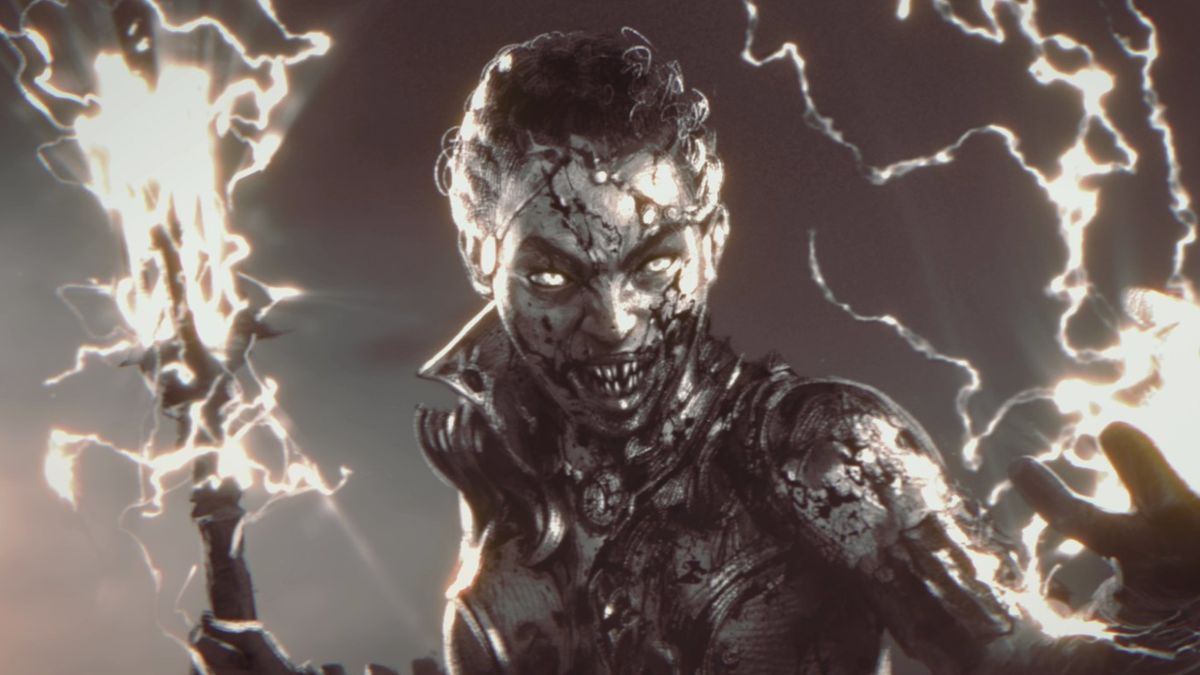Halo Infinite Forge mode isn’t coming anytime soon, but it should. I haven’t played Halo Infinite in two weeks. I’m not alone in this – player counts are reportedly dropping on Steam, Twitch viewership is low, and it’s no longer in the top five most played games on Xbox.
As a live-service game with plans to extend well into the decade, it’s expected that interest in Halo Infinite will peak and trough. A dropoff of players after campaign completion and the wave of new releases we’re seeing at the beginning of the year may be contributing to shifting player counts, so while I’d hesitate to draw conclusions as to what exactly is going on, it’s clear that there are a few areas 343 Industries could tweak to improve retention. With a small pool of maps and game modes to pull from, Halo Infinite has gotten too stale too quickly. New modes like Fiesta and Attrition temporarily spice up the gameplay, but there’s just not enough to keep players like me engaged.
Rather than put the onus on 343 to build new maps or introduce new game modes, we can crowdsource map creation and game mode variety with what is arguably the franchise’s best features. In order to have the shelf life 343 expects it to, Halo Infinite needs to utilize its most powerful resource: its community of creators.
And players’ interest in Forge has only gotten stronger in the last few days, with Forge Mode features leaking that show lighting, gameplay, biomes, structures, and props all available for creation and manipulation. Halo Infinite’s Forge looks to be the most impressive version yet, giving players mod tools and script editors that could mean an endless supply of new maps. Halo Infinite needs Forge, sooner rather than later.
Forging features

Forge is one of the most important additions to the Halo franchise. The level editor was first introduced with 2007’s Halo 3, and has been iterated and reiterated with every Halo release since. Versatile and relatively easy to use, Forge started as a way to make simple changes to existing maps, but quickly morphed into a vehicle for players to create custom maps and share them with the community. Forge became so popular so quickly that Bungie released Forge-specific maps built out of movable and deletable Forge objects for Halo 3. Following that, quality of life improvements arrived, with subsequent games adding snappable magnets, object highlights, and better lighting.
Forge is now a full-blown map creator, with sites like ForgeHub (opens in new tab) offering a collection of incredibly impressive builds designed by casual creators and professional devs alike. “For me, it began with manipulating weapons and spawns to now with the latest integration of Forge in Halo 5 creating full-on immersive experiences,” says Alex Rodriguez, AKA Infinite Forges (opens in new tab), who honed his abilities in map creators like Forge before joining Borderlands developer Gearbox as a level artist. Those experiences include recreating iconic classic Halo maps or building entirely new environments with specific game modes in mind, the options seemingly endless for Halo’s passionate fanbase.
Forge’s ability to extend the life cycle of a game is what makes it such a powerful tool. Halo 5’s version of Forge offered scripting for the first time, so players were able to harness its power to do a lot more than build throwback maps or jaw-droppingly gorgeous environments. According to ForgeHub writer, artist, and community leader Carson Barry (AKA Captain Punch (opens in new tab)), Halo 5’s Forge gave players “the most options and the most freedom,” acting as “basically its own Halo-themed game engine rather than just a level creator.”
The creations from players were so impressive that 343 Industries took notice – launching a Forge playlist three months after Halo 5’s release. Called Community Breakout, the playlist featured Forge creations made using the Breakout map as a jumping-off point, pulling the top ten community-made maps into a playlist for players to enjoy. Not long after, 343 Industries began to pull Forge maps into regular playlists, adding more depth and variety to Halo’s most popular game modes. The Halo 5 community acted as both content creator and consumer, helping 343 spice up the game long after its launch. It’s the power of that community that Halo Infinite so desperately needs right now.
Community of creators

Forge, like Core (opens in new tab) and Fortnite: Creative, provides accessible tools for map creation as well as an engaged community ready and willing to test out user-created maps. “You don’t have to learn to code, or to use Unreal, and you don’t have to get a playerbase to install your game just to be able to test your ideas. You can just make it and play it,” explains Barry.
Forge brings “community and ownership” to the Halo franchise, according to Barry. “Players are much more invested in things they are able to contribute to. It also makes the game about more than just being good at Halo and broadens the appeal of the game to a wider audience, especially once custom modes that don’t focus on twitch reflexes and high-level gameplay are introduced.”
While both Barry and Rodriguez are quick to point out that Forge shouldn’t be released until it’s ready, and that its production shouldn’t put undue pressure on devs, the advantages of a Halo Infinite version of Forge cannot be denied. Forge would help beef up existing playlists with new maps and modes that would add some much-needed depth to the current rotation. At the time of writing, the problematic Big Team Battle playlist only has three maps, and queuing was broken until just recently, making players even more frustrated by the lack of variety within the playlist.
Forge can help bridge that gap, giving 343 Industries more time and space to continue to work on future Halo Infinite content. However, launching Forge requires dev work. Barry believes a temporary salve is “fully fleshing out the custom games options as soon as is reasonable” instead of putting out a beta build of Forge. “Lobby hosts are still managing to make some interesting non-standard modes, but we’d be able to do a lot more if feature parity with previous titles was achieved,” says Barry. “Custom modes are also crucial for many Forge projects and have been one of the keystones of accessibility.”
The Halo franchise has always had a passionate and creative player base. Improved creator tools – be it the ability to create maps or more flexible game modes – could only help the community feel more attuned to Halo Infinite. Staples of Halo matchmaking like King of the Hill, Grifball, Action Sack, Team Doubles are not only fun, but they provide players with a variety of experiences – that variety is particularly important given the tightly-competitive arena focus of Halo Infinite multiplayer. New maps and modes take time and resources for 343 to create, test, and implement; but players can create those modes themselves, providing a steady stream of freshness into Halo Infinite.
If Forge is indeed as far off as 343 Industries tells us (it was recently delayed slightly and is due in 2022, but there’s no set date yet), then the developer needs to give players more opportunities to experiment with game modes. This will buy 343 time to continue making sure Forge is its most impressive version yet, while satiating players who both want to create and enjoy new modes. The community will build it and the community will come, they just need the tools.
Halo Infinite Attrition should get added to the ranked rotation.
 Games News games, movies and TV you love.
Games News games, movies and TV you love.



